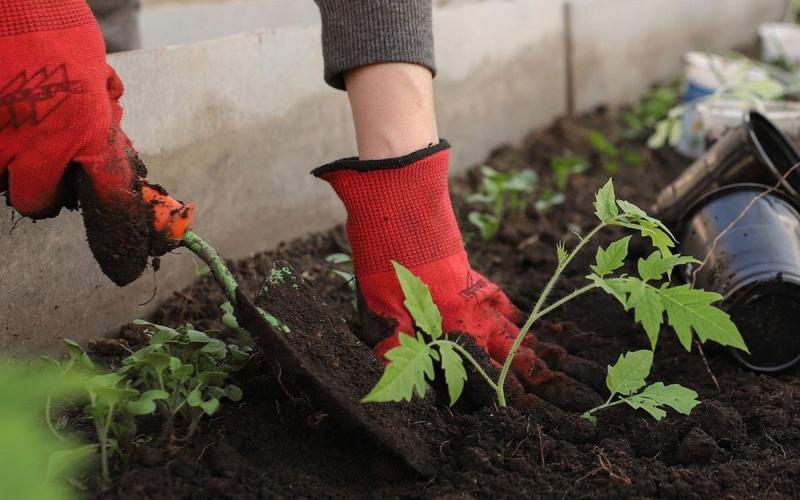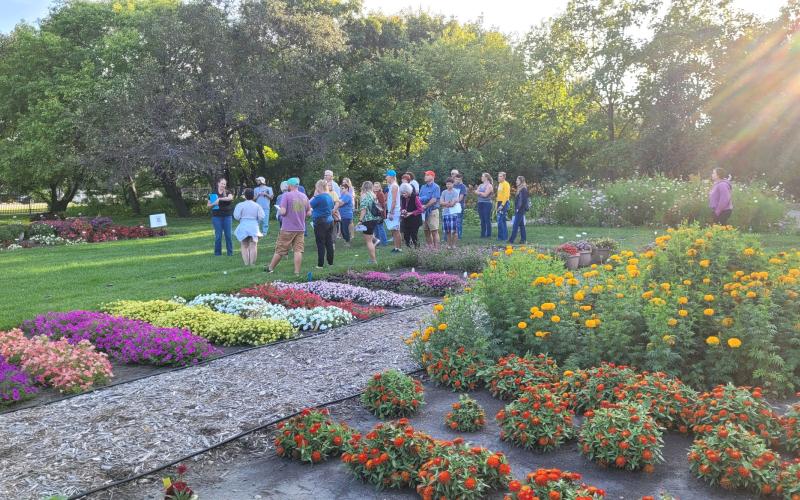Introduction
Extending crop production into the fall allows growers to take advantage of cooler temperatures and enjoy fresh, cool-season vegetables later in the year. Before investing time and money in fall gardening or season-extension methods, growers should clearly define their production goals and budget, while also considering local climate limitations and challenges.
Cold Injury Risk
The first fall frost typically signals the end of the growing season. Depending on the source, “frost” is loosely defined as occurring when air temperatures approach freezing (32 degrees Fahrenheit), generally within the mid- to low-30s degrees Fahrenheit. At this stage, plants may experience minor or superficial damage depending on their hardiness. In open fields, radiative frosts may occur at canopy height during clear, calm nights, when heat escapes from the bare soil surface, increasing the risk of cold injury.
Freezes occur when air temperatures drop to 32 degrees Fahrenheit or below. At this point, water inside plant cells can freeze, expand, and rupture, leading to tissue damage. A “hard freeze” or “killing freeze” is often defined as temperatures of 28 degrees Fahrenheit or lower, which can kill most non-dormant plants. The severity of these kinds of cold injury depend on the duration of exposure to these temperatures (e.g. a few minutes vs a few hours), which is not always easily measured. Reference First Fall Frost Dates to view timing of average frost and freeze risk in South Dakota locations.
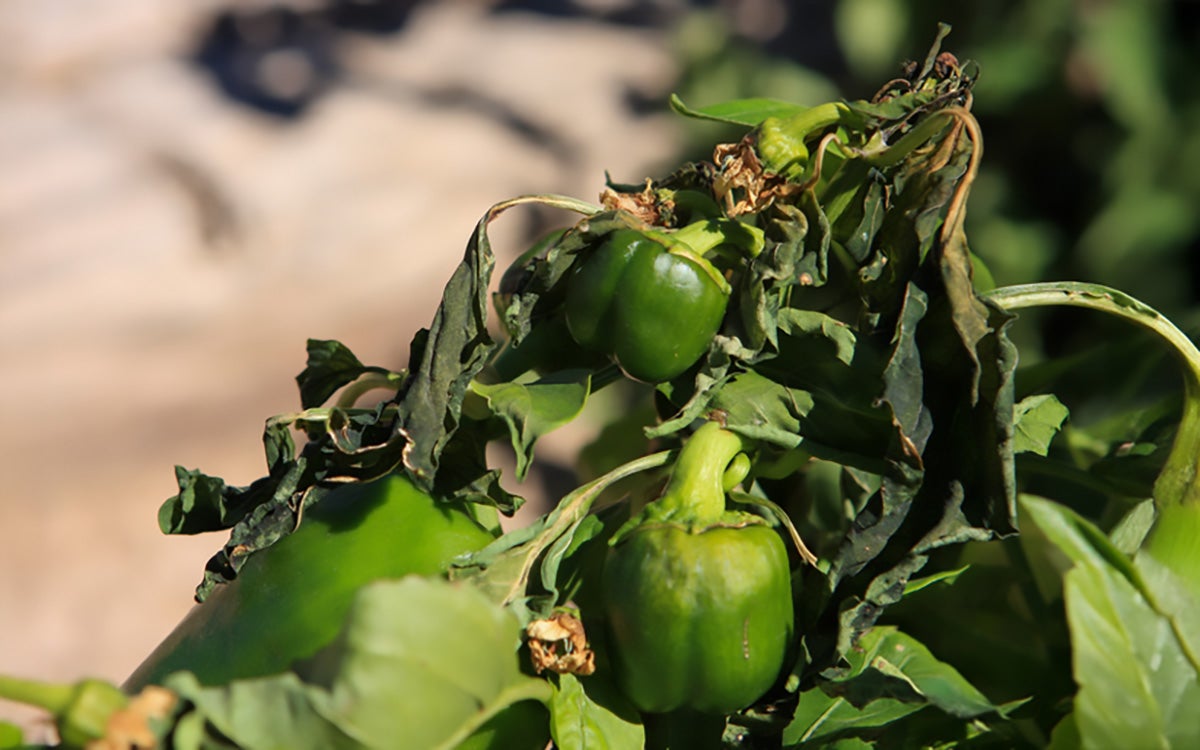
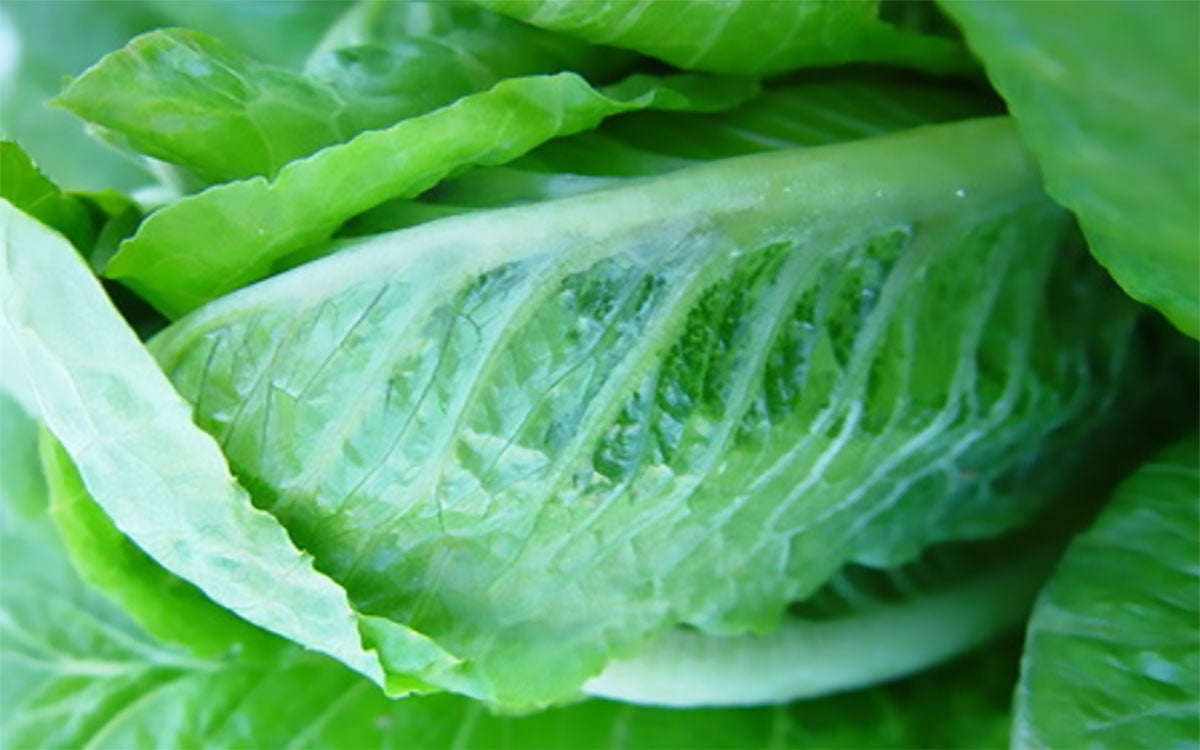
Plant Hardiness and Fall Timing
Most vegetable crops are classified as either cool-season or warm-season. Cool-season crop growth is optimized at air temperatures ranging 50 to 80 degrees Fahrenheit and soil temperatures 60 to 65 degrees Fahrenheit. Examples include peas, leafy greens, brassicas (broccoli, cauliflower, cabbage, etc.), and most root crops (carrots, beets, turnips, etc.). Warm-season crop growth is optimized at air temperatures ranging 70 to 85 degrees Fahrenheit and soil temperatures 70 to 75degrees Fahrenheit. Examples include solanaceous crops (tomatoes, peppers, potatoes, etc.) and cucurbits (melons, summer squash, winter squash, etc.) (Table 1). Some cultivars of these crops are bred and marketed as having greater cold hardiness or heat tolerance, offering growers options for season timing.
| Cool-Season Crops | Warm-Season Crops | |||
|---|---|---|---|---|
| Temperature (° F) | Minimum | Optimum | Minimum | Optimum |
| Air | 40 | 50 – 80 | 50 | 70 – 85 |
| Soil | 45 | 60 – 65 | 60 | 70 – 75 |
1Table adapted from Beddes et al. 2022.
To plan fall plantings, growers should reference frost date maps, which show the probability of temperatures reaching 36, 32, 28, or 24 degrees Fahrenheit within a given date range based on 30-year averages. These models can help growers anticipate fall frost timing and make informed decisions about crop scheduling. Table 2 provides recommended planting dates for common vegetable crops intended for fall harvest, based on their average days to maturity and assuming an average mid-September frost. For more precise planning, growers should consider their own location’s average first fall frost date along with the specific days to maturity listed for their selected cultivar’s seed label.
| Crop | Planting Date Recommendation | Days to Harvest |
|---|---|---|
| Green Beans | Jul 22 | 55 days |
| Carrots | Jul 7 – 22 | 55 – 70 days |
| Cucumbers | Jul 17 – 27 | 50 – 60 days |
| Green Onion | Jul 17 – 27 | 50 – 60 days |
| Peas | Jul 17 – 27 | 50 – 60 days |
| Beets | Jul 27 | 50 days |
| Summer Squash | Jul 17 – 27 | 50 – 60 days |
| Leafy Greens | Jul 27 – Aug 16 | 30 – 50 days |
| Kohlrabi | Jul 27 – Aug 6 | 40 – 50 days |
| Turnip | Jul 27 – Aug 6 | 40 – 50 days |
| Kale | Jul 17 | 60 days |
| Radish | Aug 20 | 26 days |
| Spinach | Aug 6 | 40 days |
1Table adapted from Burrows 2019.
Fall Season Extension Techniques

When extending crop production into the fall, protecting plants from cold injury involves different considerations than in the spring, when young seedlings and transplants are most vulnerable. By the end of the season, plants are generally larger and more mature. Many cool-season crops develop greater tolerance to lower temperatures, but warm-season fruits approaching maturity can remain sensitive to cold and require protection sooner/earlier.
The most common and accessible protection method for farmers on a commercial scale is the use of floating row covers (Figure 3). These lightweight fabric “blankets,” usually made of nonwoven (spun-bonded) polypropylene or polyester, can be laid directly over plants to “float” or be supported by frames. Different fabric grades provide varying levels of protection, generally keeping air temperatures 2 to 10 degrees Fahrenheit warmer than outside conditions. Because South Dakota frequently experiences strong winds, securing row covers is critical. Use landscape staples, bricks, sandbags, soil, or other heavy objects to anchor them. Row cover materials are designed to allow air, water, and light to penetrate the canopy while also serving as a barrier to certain insect pests.
Low tunnels are another great season extension option for farms (Figure 4). These temporary structures are about 4 feet tall and 3 to 6 feet wide, constructed with hoops made from rebar, PVC pipe, or electrical conduit. In summer, shade cloth can be applied for sun protection. When fall comes, tunnels can be covered with row cover fabrics (discussed above) or greenhouse-grade plastic (usually 4 to 6 mil thick) attached with clamps or couplings. Some plastics are UV-treated to last multiple seasons and can withstand snow loads. Plastic coverings provide greater temperature gains than spunbond fabrics by warming both the air and soil; however, overheating can occur. Venting may be necessary on days with a few hours of full sun and outside air temperatures greater than 60 degrees Fahrenheit.
Inexpensive soil and air thermometers (Figure 5) can be used to track conditions inside low tunnels. Regular monitoring helps ensure crops are not exposed to temperatures outside their tolerance ranges, whether excessively warm or cold.
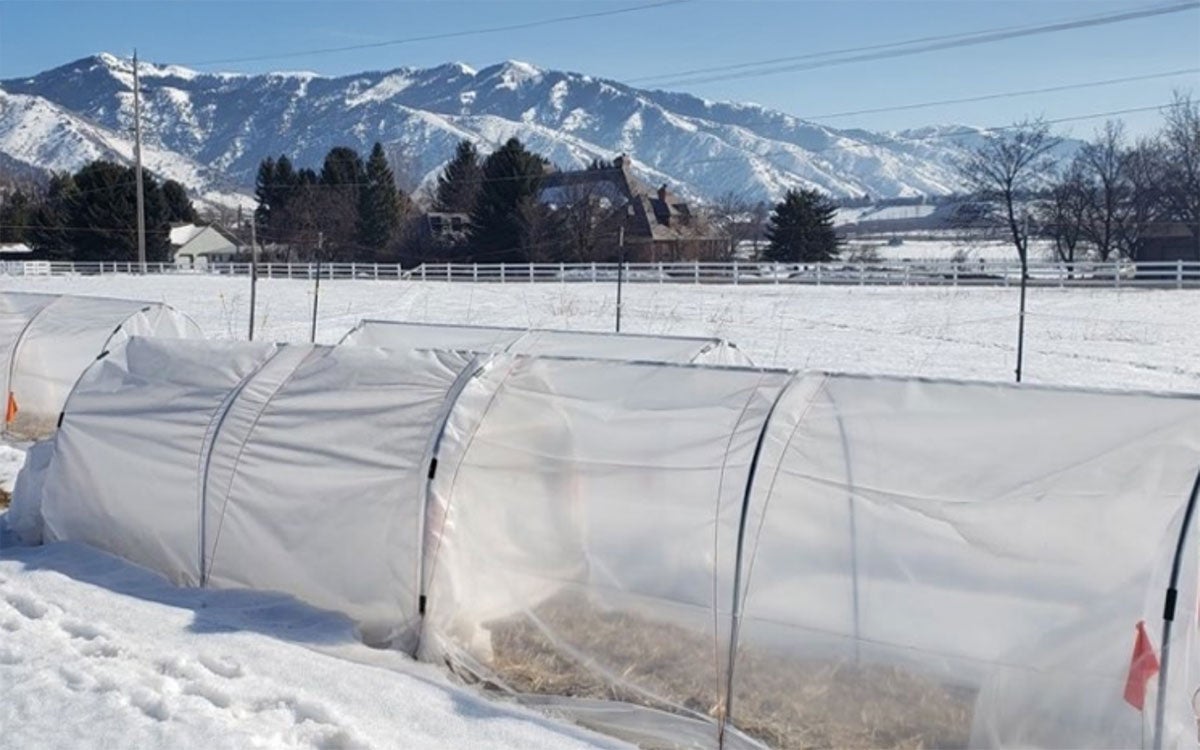
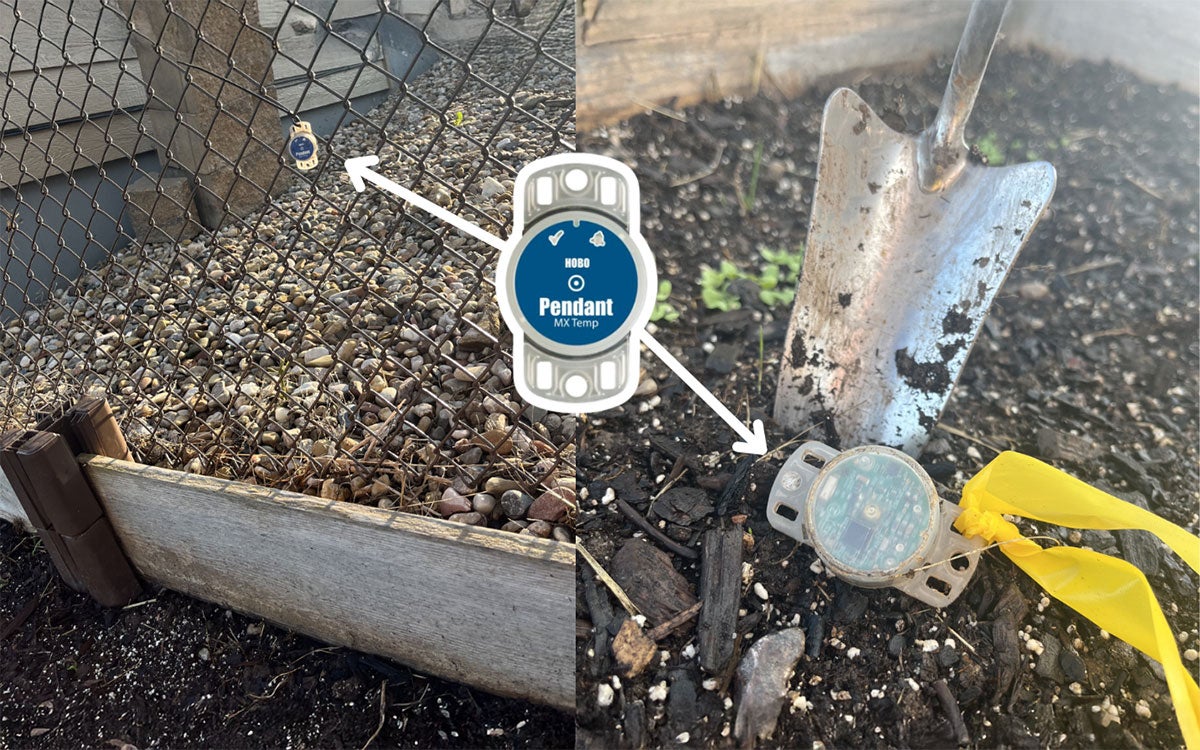
Some farms may also utilize permanent high tunnel structures, which offer excellent season-extension opportunities into the fall. Reference the High Tunnels guide for detailed information. In home gardens, smaller permanent structures such as hotbeds or cold frames can serve a similar purpose, using soil insulation and passive solar collection to maintain warmth for plants.
References
- Beddes, T., Caron, M., Hansen, S., and Gunnel, J. 2022. Extending the Garden Season. Utah State University.
- Burrows, R. 2019. Vegetable Gardening in South Dakota. South Dakota State University.
- Edwards, L. and Lang, B. 2022. First Fall Frost Dates. South Dakota State University.
- Lott, D. and Lindgren, D. 2012. Fall Vegetable Gardening. University of Nebraska-Lincoln Extension.
- Rauter, S., Stock, M. Black, B., and Drost, D. 2021. Low Tunnels for Field Cut Flower Production. Utah State University.
